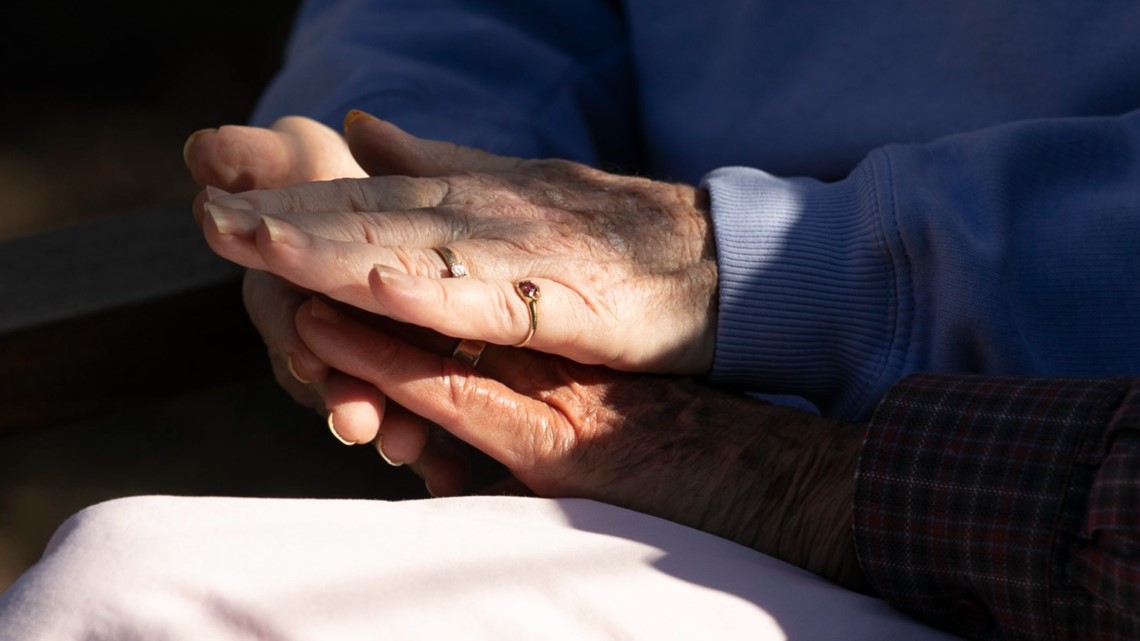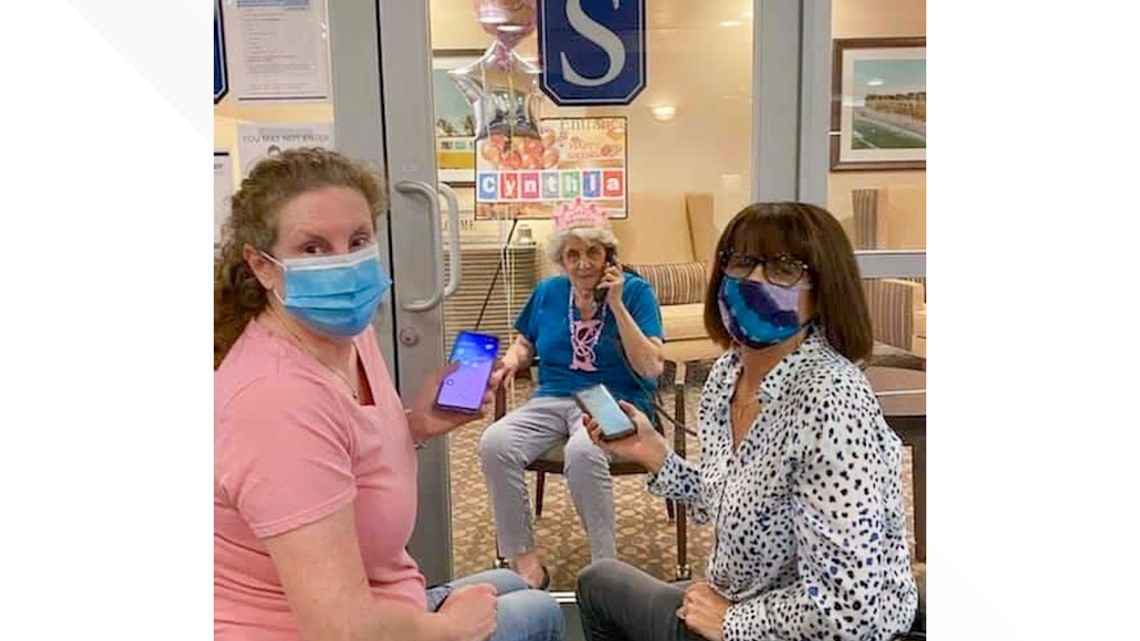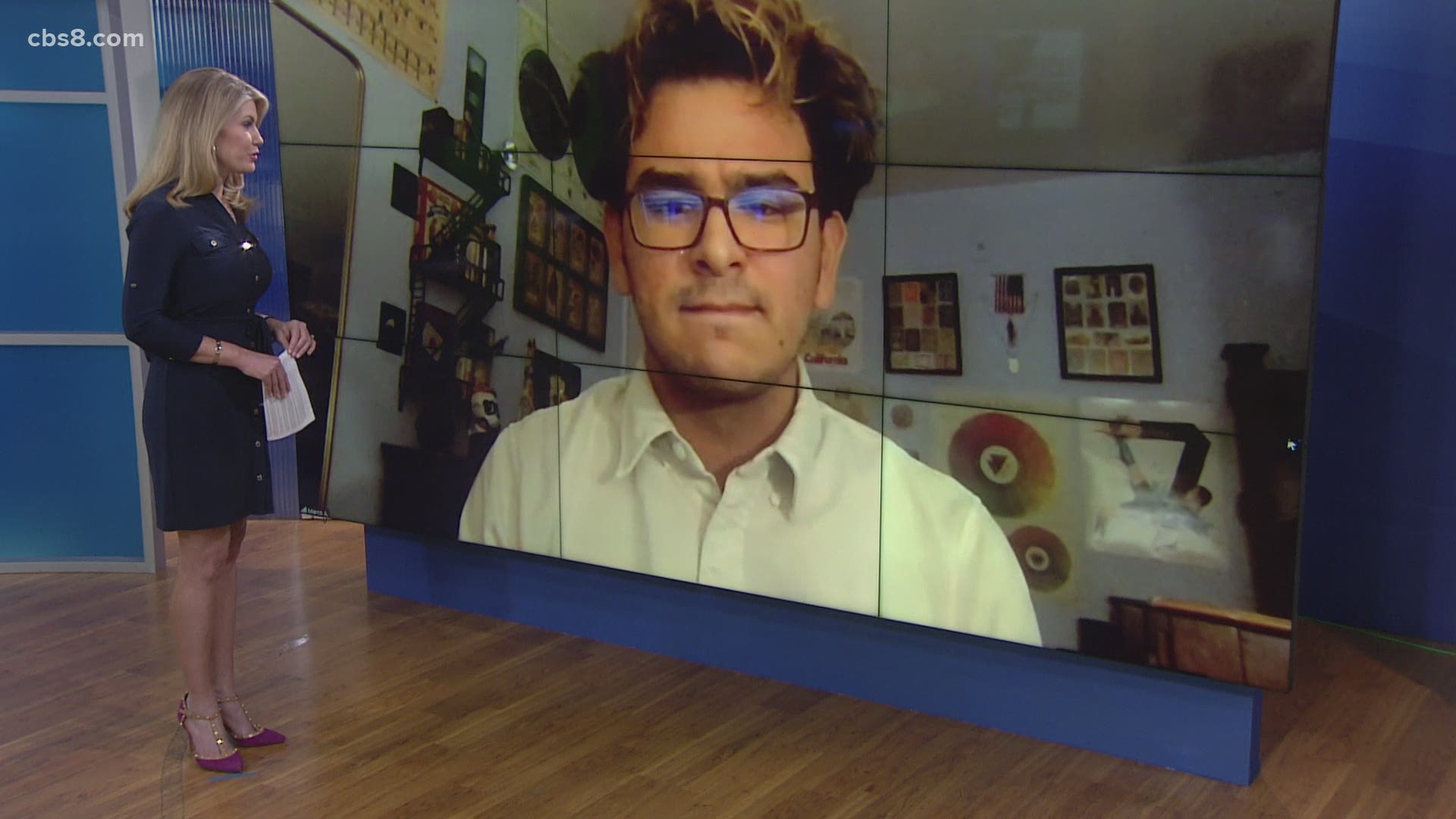CALIFORNIA, USA — This story was originally published by CalMatters.
Before the pandemic, Nancy Klein would spend up to seven hours a day at a nursing home in Riverside County, caring for her 53-year-old son, who was left unable to speak and move his limbs after a massive brain hemorrhage. She would suction his tracheotomy tube and massage his neck, arms and legs.
But Klein has watched her son deteriorate in the past year. He was hospitalized with pneumonia in May as pandemic rules largely locked down most of California’s nursing homes. And then in November, he contracted COVID-19, leading to another bout of pneumonia that landed him in the hospital. He remains on a ventilator after being hospitalized for weeks. But Klein still can’t see her son indoors, or provide the touch and exercise she says he needs to thrive.
“He can’t get better without visitation,” said Klein, 79. “Not only do patients deteriorate physically and mentally like my son did, they’re dying as well.”
As a campaign to vaccinate hundreds of thousands of California’s long-term care residents and workers winds down, family members are pressing administrators and state health officials to finally reopen nursing homes for indoor visits.
Nearly 465,000 residents and staff of nursing homes, assisted living centers and board and care homes have received at least one dose of COVID-19 vaccine. New cases of COVID-19 in California’s skilled nursing facilities plummeted from 725 on Dec. 18, when vaccinations began, to 16 on Feb. 27. That’s a 98% decline.
But so far, federal and state officials haven’t budged on guidelines that largely ban in-room visits unless a resident is close to death.
Most California long-term care homes won’t open up visitation until state public health officials update their guidelines, seniors advocates say. But the state public health agency is waiting for federal guidance.
“It’s hard to describe how despondent people are feeling in nursing homes. They’re feeling defeated and hopeless, and families are feeling pretty much the same way,” said Tony Chicotel, staff attorney for California Advocates for Nursing Home Reform. “I’m very hopeful that things will change, but I’m also concerned that it’s going to be very gradual and slow. It’s getting increasingly frustrating now that the vaccinations at nursing homes are for the most part completed.”
California Department of Public Health officials will say only that an update expanding visitation is forthcoming. Gov. Gavin Newsom has not publicly addressed the issue.
Several other states have started to reopen nursing homes to visitors. New York state, for example, allows indoor visitors at nursing homes in counties with a 10% or lower COVID-19 infection rate, requiring testing before visits depending on the rate of cases. Tennessee will lift restrictions on indoor nursing home visits on Feb. 28, as long as the homes are COVID-free for at least 14 days. Minnesota allows nursing homes to designate “essential caregivers,” who can visit and care for residents in their rooms with precautions like masks and gloves.
“What we’ve seen is policies vary from state to state and facilities to facility. Facilities can arbitrarily make decisions about visitation policies with impunity,” said Robyn Grant, director of public policy and advocacy for the National Consumer Voice for Quality Long-Term Care.
Some long-term care facilities fear lawsuits, while others may not have the staff to manage visitors.


Dr. Noah Marco, chief medical officer for the Los Angeles Jewish Home, which offers skilled nursing and other forms of long-term care to about 1,200 residents, said his facilities cannot change visitation restrictions until the state and federal agencies overseeing them issue new directives. “We can only follow the requirements of what those agencies allow us to do,” Marco said.
Marco is part of a national group of medical experts that recently sent recommendations to federal health officials, including allowing in-room visits — and hugging — if at least 80% of residents have been fully vaccinated and community spread of COVID-19 remains under a certain threshold.
“We strongly believe the sacrifice our seniors have made has been very, very difficult and caused a lot of harm. Now is the time to stop sacrificing them,” he said.
Desperate families, lonely residents
For nearly a year, most of California’s long-term care facilities have stopped almost all indoor visits, shuttered dining rooms, and held virtual-only activities, following state guidelines.
There was good reason for the move: COVID-19 swept relentlessly through many of California’s long-term care homes last year, infecting about 122,000 residents and killing about 12,600. COVID-19 also struck nearly 50,000 caregivers in these homes, killing 225.
But it has deeply isolated hundreds of thousands of disabled or elderly and frail patients, and caused anguish for their families. An estimated 400,000 Californians live in long-term care, such as assisted living or nursing homes, according to the Association of Health Care Facilities, an industry group.
Geriatrician Dr. Mike Wasserman said the benefit of ending the debilitating isolation of long-term care residents now outweighs the risk that vaccinated residents or staff may pass the virus to others.
“This has always been a risk-benefit issue,” said Wasserman, a member of the state’s vaccine community advisory committee. “When the risk of dying from COVID-19 was 30 percent, nothing was worth that risk. But it’s been a year and residents and families are desperate to see each other. I’m having trouble understanding, as residents get vaccinated, how we cannot give them the full rights they deserve as human beings, and that includes visitation.”
Under California’s current guidelines, the facilities are advised to offer outdoor and window visits, with indoor visits only allowed in large rooms like lobbies under certain conditions, like bad weather.
In-room visits are allowed only in the 11 counties currently in the less-restrictive red, orange and yellow tiers based on COVID-19 levels, and then only if the nursing home has enough staff and routinely tests staff and residents for the disease. County health officers may restrict visits further based on local conditions.
Trials of the two COVID vaccines show that they’re safe and effective in preventing severe disease, hospitalization and death. But public health experts still can’t say whether vaccination keeps people from spreading the virus to each other. Scientists believe it will, but more research is needed.
Karen Jones, executive director of the Long Term Care Ombudsman program in San Luis Obispo County, wonders why, if nursing home staff aren’t required to be vaccinated, families can’t be allowed to visit, too.
“There is no magic that makes it safe for facility staff to come in and out of those buildings but (not) families,” as long as visitors wear masks and follow other safety guidelines, Jones said.
But the waiting continues.


At a Redondo Beach memory care home, Karen Klink and her sister celebrated their mother’s 86th birthday last week through a glass door. Her mother, who has dementia, has mostly been confined to her room, Klink said, because the home still has 11 active COVID-19 cases, according to the California Department of Social Services, which oversees assisted living and other long-term care homes that don’t require skilled nursing.
The facility’s staff tried to make the visit festive, with balloons, cake and a birthday crown. But talking to her mother by cellphone, separated by glass, Klink observed how much her mother had declined since entering the home in August.
“There’s definitely a deterioration in her enthusiasm and wanting to talk and interact, a lot more confusion,” Klink said. “We all came home and cried because it was a really difficult way to celebrate someone’s birthday. We did the best we could.”

